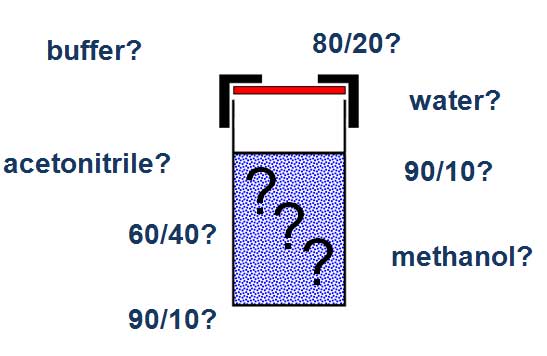A reader recently submitted this question: “Most HPLC methods call for preparing the sample in mobile phase as the solvent. I like to avoid using some of the organic solvents for sample preparation because of toxicity issues, so most of the time I will prepare the solutions using only the aqueous component of the mobile phase as the sample solvent if the analyte is sufficiently soluble in water. For example if the mobile is 80/20 acetonitrile/buffer, I will use the buffer as the sample solvent. Am I creating a problem when I do this?”
The short answer is that this should not be a problem. Ideally, the sample solvent should be the mobile phase and the injection volume should be very small, so that neither the volume or solvent composition disturbs the mobile phase equilibrium in the column. You usually can inject up to 15% of the volume of the first peak of interest without seeing any problems if you inject in mobile phase as a solvent. Anything weaker than the mobile phase (that is, more water for a reversed-phase system) will tend to focus the sample at the inlet of the column, and can compensate for larger injection volumes. For example, you may be able to inject 100 µL of sample dissolved in buffer without seeing any difference compared to injecting 10 µL of the same sample dissolved in mobile phase.

The place you can get into trouble is if you try to inject in a solvent that is stronger than the mobile phase (more of the organic component). In such cases, unless the injection volume is quite small, the peak broadening can occur as the sample is swept quickly down the first part of the column while the injection solvent becomes diluted into the mobile phase.
And once again, this is a case where a little trial and error may win out over a theoretical discussion. Just compare the chromatograms between a sample injected in mobile phase and one injected in buffer as the sample diluent. If there is no difference, you’re home free.
If you’d like to read a bit more about how the injection solvent can impact the chromatogram, look in the archives for HPLC Solutions #77.
This blog article series is produced in collaboration with John Dolan, best known as one of the world’s foremost HPLC troubleshooting authorities. He is also known for his research with Lloyd Snyder, which resulted in more than 100 technical publications and three books. If you have any questions about this article send them to TechTips@sepscience.com




